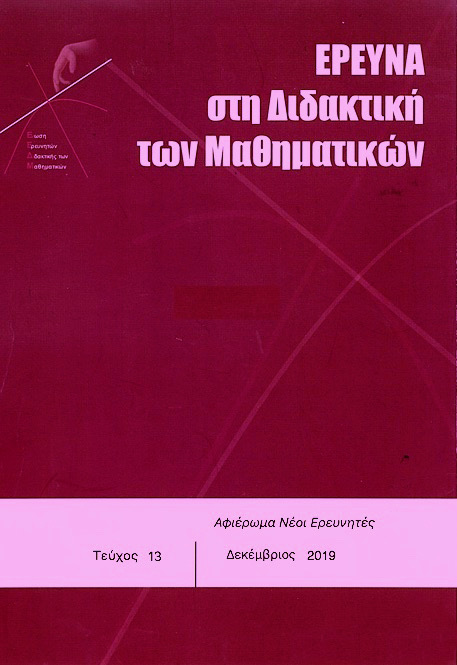Η ΜΑΘΗΜΑΤΙΚΗ ΛΟΓΟΤΕΧΝΙΑ ΩΣ ΕΡΓΑΛΕΙΟ ΓΙΑ ΤΗΝ ΚΑΤΑΝΟΗΣΗ ΤΩΝ ΡΗΤΩΝ ΑΡΙΘΜΩΝ

Περίληψη
Οι ρητοί αριθμοί αποτελούν μια από τις βασικότερες έννοιες στα μαθηματικά. Η έρευνα έχει εντοπίσει μεγάλες δυσκολίες στην κατανόησή τους και έχει καταγράψει πολλά λάθη, παρανοήσεις και αρνητικές στάσεις από τους μαθητές. Στην παρούσα μελέτη με τη χρήση της μαθηματικής λογοτεχνίας γίνεται προσπάθεια να αντιμετωπιστούν αυτές οι παρανοήσεις και οι στάσεις να γίνουν πιο θετικές. Ο πρώτος συγγραφέας του άρθρου έγραψε μια μαθηματική ιστορία με τίτλο "Ταξίδι προς το Μηδέν" που ασχολείται με τις έννοιες της διάταξης και της πυκνότητας των ρητών αριθμών. Η κατανόηση των ρητών πριν και μετά την ανάγνωση της ιστορίας ελέγχθηκε με ερωτηματολόγια και ατομικές ημιδομημένες συνεντεύξεις σε έξι μαθητές της Στ’ τάξης ενός δημοτικού σχολείου στην Ελλάδα. Τα αποτελέσματα έδειξαν ότι μια μαθηματική ιστορία θα μπορούσε να αντιμετωπίσει παρανοήσεις στους ρητούς και να βελτιώσει τη στάση των μαθητών στους ρητούς.
Λεπτομέρειες άρθρου
- Πώς να δημιουργήσετε Αναφορές
-
Μαρής (Dimitris Maris) Δ., & Χρήστου (Konstantinos Christou) Κ. (2019). Η ΜΑΘΗΜΑΤΙΚΗ ΛΟΓΟΤΕΧΝΙΑ ΩΣ ΕΡΓΑΛΕΙΟ ΓΙΑ ΤΗΝ ΚΑΤΑΝΟΗΣΗ ΤΩΝ ΡΗΤΩΝ ΑΡΙΘΜΩΝ. Έρευνα στη Διδακτική των Μαθηματικών, (13), 46–67. https://doi.org/10.12681/enedim.21967
- Ενότητα
- Νέοι Ερευνητές

Αυτή η εργασία είναι αδειοδοτημένη υπό το CC Αναφορά Δημιουργού 4.0.
Οι συγγραφείς των άρθρων που δημοσιεύονται στο περιοδικό διατηρούν τα δικαιώματα πνευματικής ιδιοκτησίας επί των άρθρων τους, δίνοντας στο περιοδικό το δικαίωμα της πρώτης δημοσίευσης. Άρθρα που δημοσιεύονται στο περιοδικό διατίθενται με άδεια Creative Commons BY και σύμφωνα με την άδεια μπορούν να χρησιμοποιούνται ελεύθερα, με αναφορά στο/στη συγγραφέα και στην πρώτη δημοσίευση.


